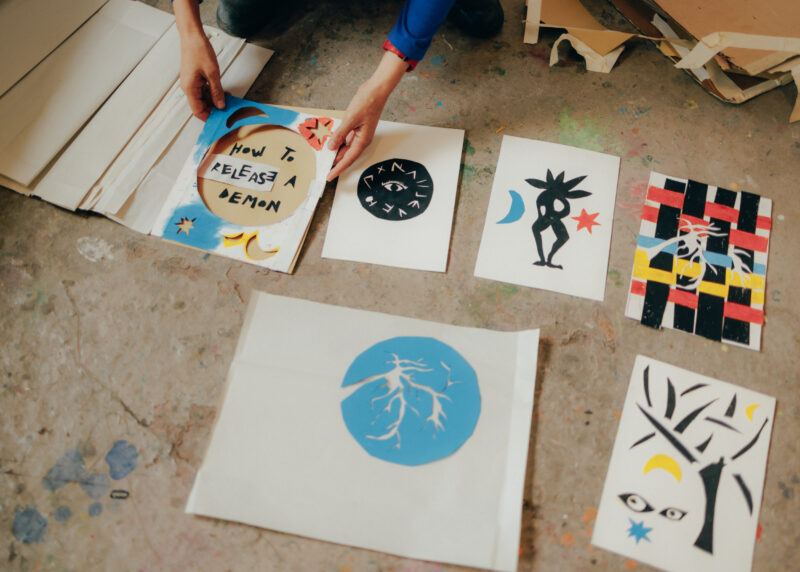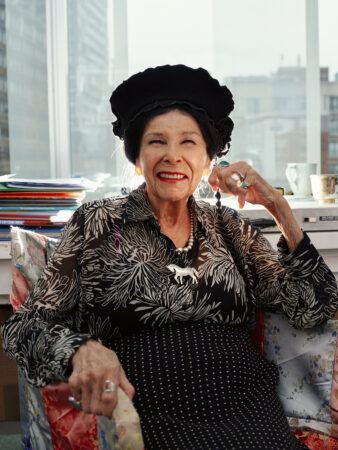Interview conducted for Art21 in April of 2024 by Jurrell Lewis. Original photography for Art21 by Timothy O’Connell. This interview is published as a part of the partnership between Art21 and Printed Matter’s NY Art Book Fair.


In the Studio
Tamar Ettun connects to her inner demon.
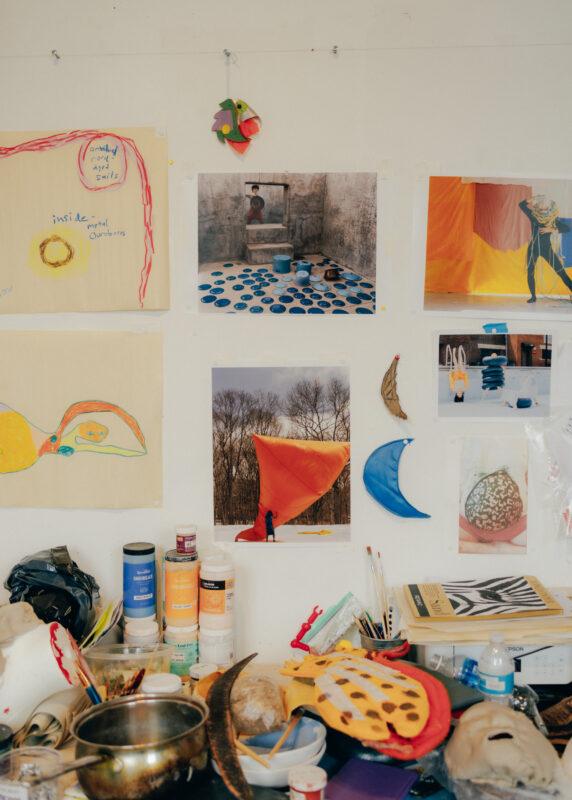
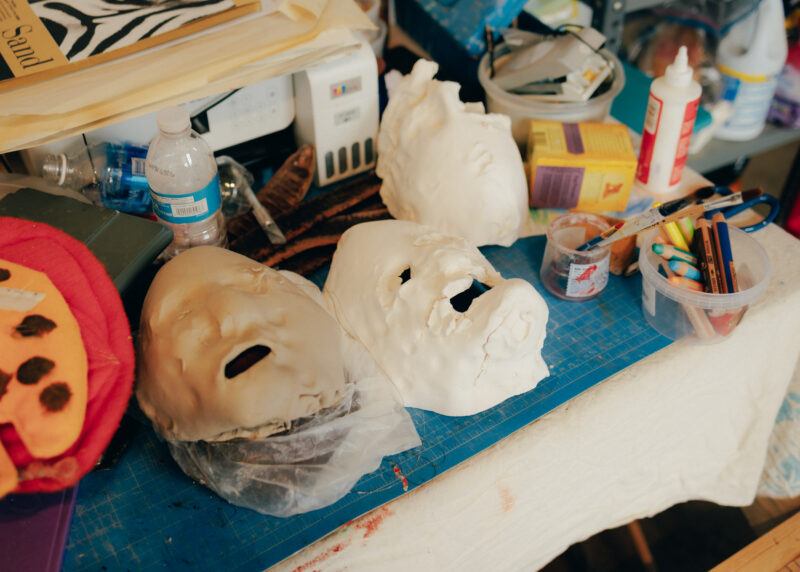
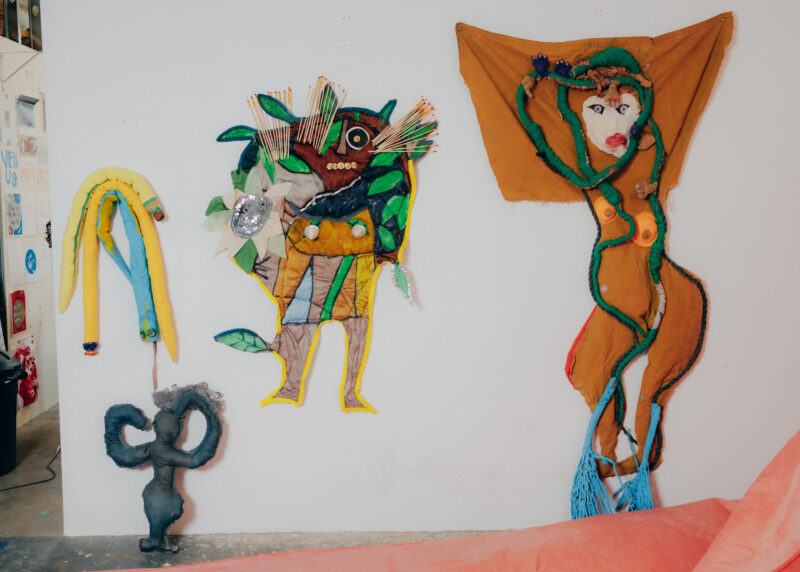

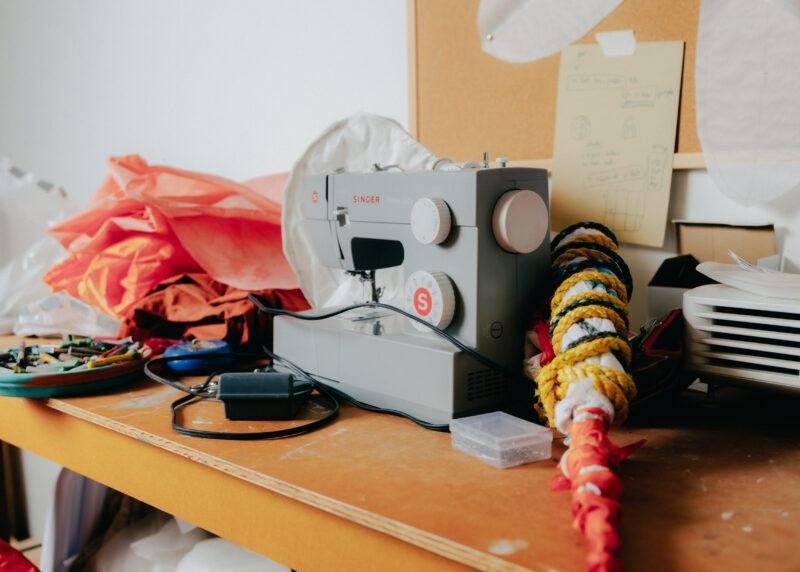

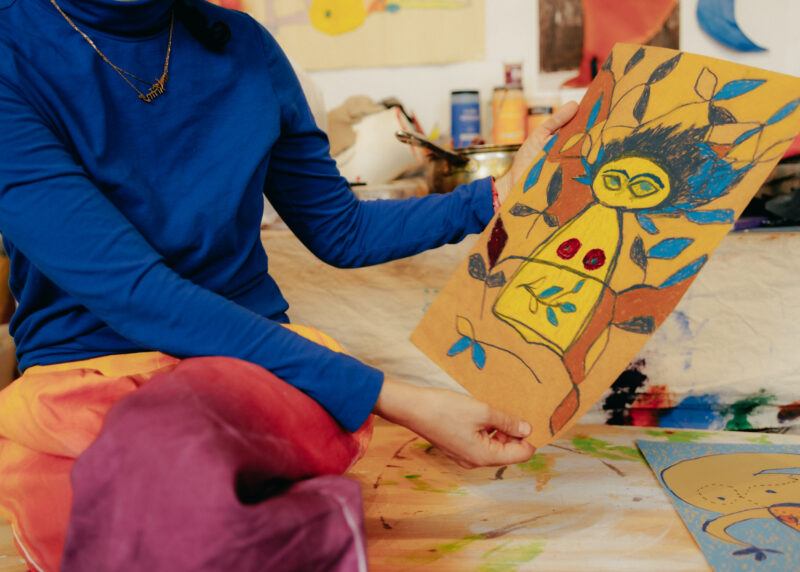

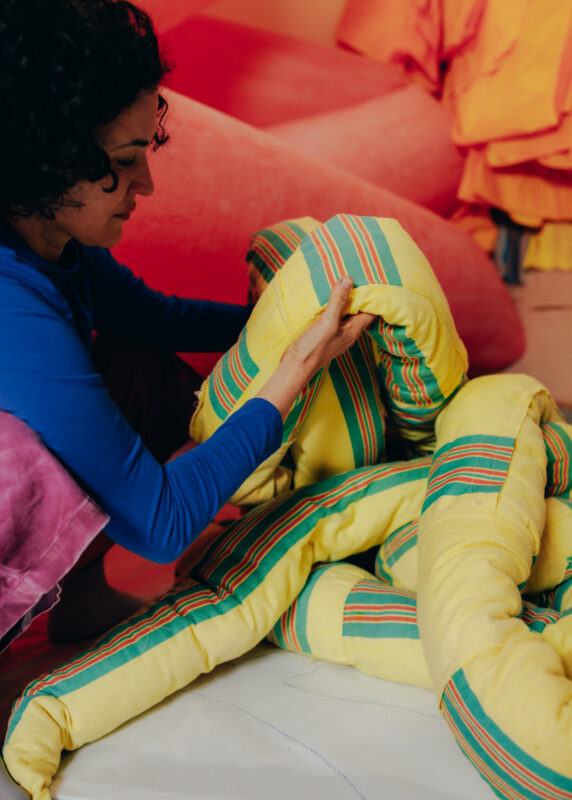
Jurrell Lewis – You have an ongoing body of work where you collaborate with the demon Lilit. Who is she?
Tamar Ettun – Lilit is a mythical demon with Sumerian, Akkadian, and Judaic roots. Her myth began in the Middle East, in Babylon, which was located between contemporary Iran and Iraq. She is the mother of all demons.
I encountered her at MOCA Tucson when I did a residency there in late 2019. MOCA Tucson is in an old firehouse and, during the residency, I slept on the top floor of the museum. In the night, I felt some kind of spirit there with me, so I called a friend who is an archeologist and I told her what was going on. “Well, it must be Lilit,” she said, and mailed me a book that described a magical ancient ritual practiced in the second to seventh century, in Babylon.
It was focused around this demon Lilit, who was characterized as an immigrant and a dangerously sexual female entity. I was fascinated by this ritual because my work has been focused on trauma-healing—and here is this ancient ritual that serves as medicine for trauma. When someone was sick or in pain, they would go to an artist-magician and they would describe the demon that was causing their sickness or their pain. The artist-magician would then draw that demon in the center of a ceramic bowl and write a spell around it. They would then go to the sick person’s home, turn the bowl upside down on the floor to trap the demon, and bury the bowl with the demon trapped inside.
When you are thinking about your pain, you shape an understanding of that pain through a conversation with this artist-magician. The ritual is an empathic experience that bonds the artist-magician and the person in need, and creates a form of protection from the demon hurting them. In my work, I think about Lilit as a complex empathic figure that is responding to historical gender-based oppression: she represents female agency, mysticism, and resilience.
How does Lilit manifest in your current practice?
At the beginning of the pandemic, I began texting people as Lilit. Anyone who texts “SUMMON” to 833-575-1049 can subscribe for free and interact with Lilit anonymously. In her messages, Lilit sends a drawing and a text, a practice that connects to the original ritual in which there was always an image and a spell. In the texts, Lilit provides a short horoscope, a somatic exercise to connect subscribers to their bodies, and a question that relates to her history as a demon.
One of the things that Lilit requests is that people name their own demons, and she’s received hundreds of answers with different names of her subscribers’ personal demons.
At the same time, I was doing a residency at the Chinati Foundation, and had found these beautiful blue bowls in their kitchen. So I took all the demon names Lilit had received and I produced a video where I used the bowls to perform the ancient demon trapping ritual, How to Trap a Demon (2023).
I recently completed the video with a voice recording by Holland Andrews, who spoke the names of the demons I received from Lilit’s community and made bird sounds that correspond with Lilit’s name in Hebrew, which means “owl.” Since then, I’ve been performing more intimate demon trapping rituals. In these, I take on the persona of Lilit, and people come to meet her and together we make these performances, where they share their demons with me and we trap them together. Most recently, these have developed into larger performances inside immersive installations created using repurposed sails to reference Lilit, where people come together in a group and we perform the demon trapping ritual.
In the group ritual, we stand in a circle and Lilit leads the group in a series of somatic exercises. These are meant to allow the group to embody their demons and enable participants to get really specific about their personal manifestation of the demon Lilit. Then, together, we perform trapping the demon, and Lilit goes one by one and asks everyone to name their demon and repeats it out loud. It is always incredibly moving to experience that: to be in a group of strangers in this art context and listen to them sharing the names of their demons, like the demon of shame, the demon of anxiety, the demon of imposter syndrome. Sometimes, just naming them in this group setting can have a healing effect on its own.
You’ve been making work about trauma and healing for a long time—has working with Lilit changed your practice or perspective?
Lilit is the demon of empathy, and empathy has been at the core of my work for a long time. When Lilit came to me, I was in an empathy crisis. I had this idealized view of empathy as the solution for trauma, and then I realized three things about empathy that opened my eyes . The first realization was that empathy is tribal, because we tend to empathize more with people that are part of our “in-group,” which can cause a lot of injustice.
The second was the concept of “empathy fatigue,” which I think a lot of people have been feeling throughout the pandemic. With so many terrible things happening in the world all the time, there’s a feeling of helplessness, so we’re just completely shutting down and experiencing the exhaustion of empathy. The last realization was that empathy is not always ethical—empathy is not good or bad on its own.
In working with Lilit, what I’m really interested in is somatic empathy, where you feel with your body. This is the instinctive impulse you feel when someone else is in pain: you feel their pain viscerally within your being. What draws me to somatic empathy is that it is not about where the other person comes from, their political beliefs, their class background, or anything else—it’s an automatic response of the body. The work that I’m doing with Lilit is to think about empathy through the body: to think about what we inherit that lives in our bodies, what sticks through muscle memory, and how to connect empathy to action.
I knew Lilit from my childhood—I was raised Jewish Orthodox in Israel. I feel that it is important for me to be talking about trauma and healing, and I can’t talk about that without addressing what is happening in Israel-Palestine right now. There is this intense, horrific war going on, and it is in my heart to call for a ceasefire, and for the release of the hostages, and for an end to occupation. This is all connected to my thinking about Jewish healing rituals, so not speaking about it wouldn’t be true to the work.
A lot of your work with Lilit centers communication—making connections with others and building a vocabulary to talk about one’s trauma. Could you talk more about the role of language in this work?
The work with Lilit is always about correspondence. It’s always about the conversation that she has with her readers, and about a shift in perspective—one that I hope is mutual. What people write to Lilit can completely change the way I’m thinking about her or the way that I’m making the work.
The book, Texts from Lilit (2022), edited by Meghana Karnik, came out two years ago. It comes in a little box, and in the box there are 31 cards based on text messages that Lilit has sent her subscribers. On one side, there is a drawing of the demon, and on the other, there is a horoscope, a somatic instruction, and a text describing who the demon is and instructions for how to play with them. In the cards, you can really feel Lilit’s voice, this personal approach that she has, and the intimacy that she develops with her readers through texting.
For this year’s New York Art Book Fair (NYABF), I’m making a new book with Dog Eye Press, How to Trap/Release a Demon (2024). It is a series of hands-on instructions for people to trap their own demons: what materials you would need to perform the ritual, with demon and placenta drawings. Part of Lilit’s demonized femininity is that she is the ultimate depiction of the bad mother, which ties to my own thinking about birth and parenting.
You’ll also be presenting a site-specific installation at this year’s NYABF—can you tell me a bit about it?
Yes, I am so excited. I am working on a new piece, presented by Dreamsong Gallery, of a 100-foot long, hand-dyed, inflated umbilical cord that will drape from the ceiling. In June of this year, I’ll be showing an inflated placenta in an exhibition at the Ford Foundation. Through both of these giant sculptures, I am exploring Lilit’s narrative in relation to pregnancy and birth, in order to address contemporary issues that show the ongoing lack of support to pregnant people and parents. Issues such as the threat to abortion rights, the lack of institutionalized childcare support and parental leave, social isolation of immigrant mothers, stigmas around postpartum depression, and the alarming maternal mortality rate in the United States. As someone who was once pregnant myself and is parenting a toddler, this issue is personally important to me.
Alongside the enormous umbilical cord at the NYABF, I am creating an immersive text and drawing installation that will transform the staircase and create a unique experience for the visitors. People who climb the stairs will encounter drawings of the many faces of Lilit from an archive I have been making for the past four years, along with a personal message from her. In her text, Lilit will talk about the traumas that we inherit in the womb. She addresses questions like, “How can we care for ourselves and create systems that can care for us with intergenerational trauma in mind? How can we make these internal demons that we all have more visible? How can we name them?” I think, when we do, hopefully we’ll have a little bit more freedom to move in the world.
In her text, Lilit will also directly address the celestial movements during the fair, and the transition of Pluto to Aquarius after 226 years. Because of this transition, Lilit is thinking a lot about revolution, thinking about how we can bring on a revolution which will dismantle conservative, patriarchal structures in our personal lives and collectively.


